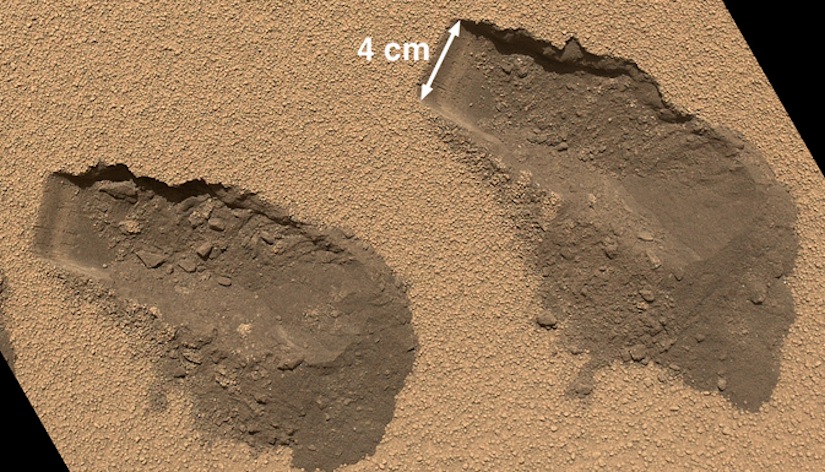NASA’s Curiosity rover analyzed its first scoop on Mars and found water molecules in “higher than anticipated” quantities, according to an announcement from the Jet Propulsion Laboratory today.
[aditude-amp id="flyingcarpet" targeting='{"env":"staging","page_type":"article","post_id":583538,"post_type":"story","post_chan":"none","tags":null,"ai":false,"category":"none","all_categories":"business,","session":"C"}']The water found attached to sand or other particles is “not unusual,” according to JPL, but the quantities are surprising as the team looks for organic compounds in Martian soil.
Currently, the Mars rover is stationed at “Rocknest,” which the JPL team choose for its dusty conditions. They researchers felt that Curiosity could use the dirt here to clean out its arm, which scoops up material and delivers it to analysis tools inside its body. The arm needed to be cleaned of any Earth materials that could get mixed in with the Martian samples.
AI Weekly
The must-read newsletter for AI and Big Data industry written by Khari Johnson, Kyle Wiggers, and Seth Colaner.
Included with VentureBeat Insider and VentureBeat VIP memberships.
This was the first time Curiosity has used all of its instruments in analyzing the regolith, or Martian soil. This included its Sample Analysis at Mars tool (SAM), the Chemistry and Mineralogy instrument (CheMin), and others. Indeed, it cooked some of the dirt in a tiny oven inside its body.
The regolith here revealed volcanic-like properties similar to Hawaii as well as glass particles. Some of the dirt further revealed carbon-based chlorine and oxygen compound called perchlorate. This was first discovered by NASA’s Pheonix Lander. “One-carbon organics” were also created when dirt was heated inside the tiny oven, meaning that we could be one-step closer to understanding how life could form on Mars. We’re still a long way off, however, because NASA says the chemical reactions that formed the carbon may have been the product of an Earthly object mixing in with the regolith.
After Curiosity is done analyzing the martian dirty here, it will head off toward its ultimate destination Mount Sharp. Its mission is to determine whether or not the Gale Crater ever had the environment that could have sustained microorganisms.
Curiosity scoops image via JPL
VentureBeat's mission is to be a digital town square for technical decision-makers to gain knowledge about transformative enterprise technology and transact. Learn More

